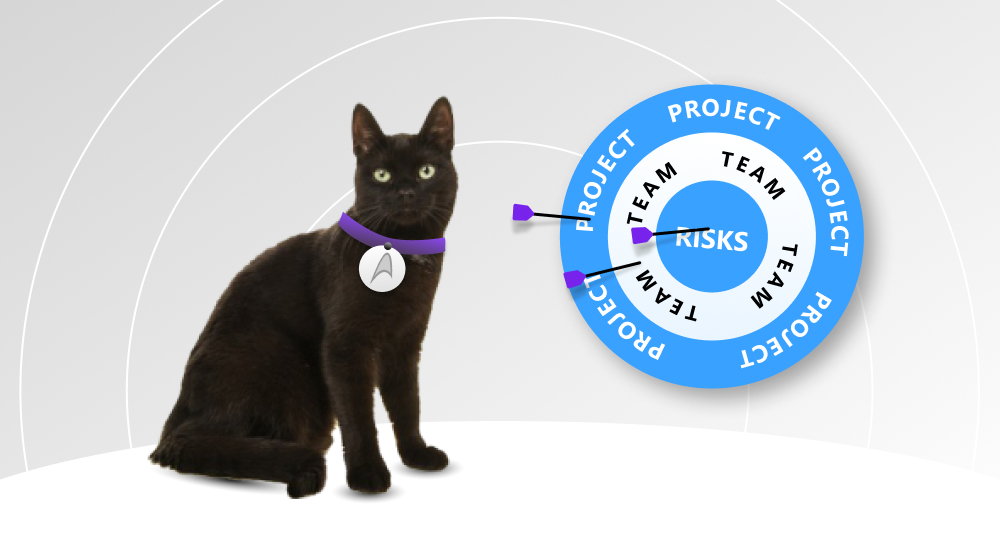Many great ideas have failed due to the lack of time. “If only we had more time…” is a common regret that follows broken dreams and lost hopes. There are a lot of variables to take into account, not to mention unexpected factors and challenges. So no wonder that the exceptional talent of software development time estimation is a precious skill today.
Nevertheless, there is nothing impossible, even in an insecure sphere of predictions and suppositions. Check our new guide to become a pro in time estimation for software development.
WRITTEN BY:
Pavel Dichkovsky
Senior Software Developer, Qulix Systems
Contents
Why Estimate Time?
Several years ago, the study by Harward Business Review revealed that about a quarter of 1500 IT projects they researched had a schedule overrun at 70% on average. Since that time, the accuracy of time estimation has ultimately improved to some extent. Nevertheless, some essential aspects make this strive for perfect time management extremely urgent for all parties involved. The customer needs relevant time estimation to:
- launch a new project faster than competitors;
- choose the best vendor to meet requirements;
- budget the project wisely;
- plan the next stages of development.
For developers, in their turn, mastering time estimation brings substantial advantages and enables them to:
- prioritize the workflow of the ongoing projects;
- provide the clear guideline of the project for the whole team;
- use resources more effectively;
- win customer loyalty.
We can surely extend the list of pros, but let us better dig into the main factors that make estimating the software development process a burning question.
Mission Impossible?
According to Parkinson’s Law, first published in the Economist, “work expands so as to fill the time available for its completion.” For instance, if you estimate the time of the project as two months, you will tend to complete it in two months. If you set a six-month deadline for the same project, the result will be achieved after half a year of dedicated work.
However, for both developers and project owners, this magic trick with time is a severe problem, with such major obstacles for time estimation as:
- changing requirements — the project is not a still art, and some alterations during its development are natural, but numerous variations can seriously affect the development time;
- tech issues — each project is a challenge for developers no matter how familiar they are with the job, and unpredicted problems with libraries or frameworks can make time estimation a bit of a guess or a lottery;
- a human aspect — this is the issue that should always be considered, especially in our unpredictable pandemic world because developers are earthly beings.
Nevertheless, there are several vital stages and practical approaches to estimate software development time more or less accurately. We will also share some of our exclusive tips and tricks to move your estimations up on the level.
Do a Thorough Research
Start your time estimation with asking yourself three essential questions as shown below. They will help you look at the project as a final product and consider various aspects of its creation that influence the time needed for the process.
What Is the Project?
Even though all projects are unique, they can be divided into several categories, and this subdivision can greatly influence the accuracy of software development time estimation.
- Level 1. A basic customer portal or a landing page is a highly predictable project. Time estimations will be relatively faultless due to its clear and easy structure and minor alterations in the procedure.
- Level 2. This level requires some additional tech integrated into the basic typical structure, like customer portals with Enterprise Resource Planning (ERP). Here, estimation accuracy can face a definite amount of risks.
- Level 3. In this case, you will deal with complex projects requiring specific technologies or innovative research and projects developed in the act. They are the most difficult ones in terms of time estimation. Still, an experienced development company like Qulix Systems can help you evaluate your project.
At this stage, you can get the first look at the number of hours to be spent on your project’s development in the best-case scenario. And the next essential step for estimating lies in the area of skills and experience.
What Team Do You Have?
Senior developers can complete your tasks much faster and more efficiently than juniors. That's self-evident. But you do not always need a spaceship to go to the grocery. Here the team of developers is a primary aspect. The team’s velocity can be calculated by the progress they can accomplish in a definite time. This quantity largely depends on the experience of teamwork and the methodologies adopted by the company. For example, Agile methodologies provide a smooth and systematic development process with easily monitored results. Thus, the development time can be measured and predicted with a high accuracy rate. But there is always room for unpredictable components as software development is a discovery process, not a mechanical work.
What Are Risk Factors?
The main time eaters can be caused by inconsistent technology, integration issues, and scaling in the process. Also, it will help if you keep in mind that software projects consist of writing code and testing, and they require team members' meetings and approvals of the clients. As we have mentioned earlier, there can also be a substantial degree of productivity loss caused by human factors.
Considering all the risks and providing a safe buffer for a project are crucial for estimating software development. It is recommended to add 15–20% buffer time to your final results. And now you are ready to make the calculations.
Count the Score
There are several approaches you can use. Applying any of them, you can estimate software development time with various degrees of accuracy. We’ve handpicked for you the most common ones.
Experience or Historical Approach
The first approach we want to highlight is using previous experience. It is not rare when software development companies mark their tremendous experience as one of the main advantages over their competitors. The historical data of previous projects help to provide time estimates for future projects. It can be rather informative when you have a complete view of the demands of similar projects.
Still, it gives only approximate estimation and should be accompanied by more reliable approaches we will mention. So, start with rough calculations based on your completed projects and then turn to one of the following techniques.
Breakdown or Bottom-Up Approach
This type of time estimation implies evaluating the total amount of time for a project by summing the time needed to accomplish all development stages. That is why the primary step of the bottom-up approach includes careful defining of project phases. The development team makes a thorough analysis of the entire scope of work to estimate time. It is also essential to use the second level of the process — expertise by an independent specialist of the company — and add his or her adjustments if necessary.
The approach provides a good degree of accuracy and helps monitor the progress of the development process. It also requires a high level of teamwork and can be inaccurate for complex projects.
Meanwhile, the final method we will tell you about is considered the most accurate.
Planning or SCRUM Poker
Developers are not always on the same page when it comes to time estimation. They can have different experiences and various preferences in the workflow. So, it is not always that easy to make evaluations about the stages of the project. That is where you can consider using the Planning Poker or SCRUM Poker approach. The method is introduced by Agile project management.
The core idea of Planning Poker is to voice the opinion of each team member. They all get a set of unique cards with values. The specialists give their time and difficulty estimates for all the features of the project. Then the values are discussed until all the team members agree. What is essential for this approach is that the results are not averaged. The estimators discuss the project together using their experience and skills to come to a team decision. This approach provides the most accurate time estimation for even the most complex projects.
Apart from widely accepted methods, we believe it is crucial to mind some critical factors accompanying your software development schedule.
Our Clever Tips & Tricks
We are ready to share some of our insider tips that will significantly improve your time estimation skills.
Fragment Carefully
Good estimation consists of the largest possible number of stages. Each requirement should be valued thoroughly according to its complexity and possible extensions. We also recommend turning to the Scaled Agile Framework or SAFe. It is a popular framework that helps scale projects of different sizes, defines standard metrics and other essential features, and has a great supporting community. After careful fragmenting, turn to our following recommendation.
Stay Realistic
It is a great technique when you base your time estimation (TE) following a simple formula:
TE = (O + 4R + P)/6, where
O is optimistic time;
P is pessimistic time; and
R is the realistic time you believe is fairly enough for each task.
So, when you scrupulously estimate the time for your carefully fragmented project, you will be able to see the project almost entirely. But mind our following tips.
Test from Day One
Reliable software development time estimation should always consist of testing from the very beginning of the project. Leaving enough time for QA services and testing, you avoid unexpected time breaches during all stages of software development. This tip is also closely connected with our following recommendation.
Monitor and Adjust
It will be helpful if you are prepared to monitor your software development project at every turn and adjust the initial estimation to the actual scope of work. We offer you to rely on modern project management applications like Jira or Wrike. Regular control, team discussions, and clever adaptation of your estimates within the borders of the time buffer are essential for the success of your project.
Summing It Up
We are sure that thorough software development time estimation is crucial for both project owners and development companies. You should consider the factors that lie beyond code writing and research your projects from all possible perspectives. And mind our additional tips, of course. And as a final sum-up of our guide, we will remind you a bit of classic:
"Admiral James T Kirk: Scotty, how much is the reset time till we can take around again?
Engineering Officer Montgomery Scott: Eight weeks, sir. But I know you don't have eight weeks, so I'll do it for two.
Admiral James T Kirk: Mr. Scott, have you always multiplied your estimates by the factor of four?
Engineering Officer Montgomery Scott: Certainly, sir. How else can I keep my reputation as a miracle worker??"
From Star Trek 3: The Search For Spock
So, let us be your trustworthy miracle workers:)
To find out our expert time estimation for your project, contact our specialists. We will be glad to advise you on the best strategy. For more insights, please, visit our website.

Contacts
Feel free to get in touch with us! Use this contact form for an ASAP response.
Call us at +44 151 528 8015
E-mail us at request@qulix.com











